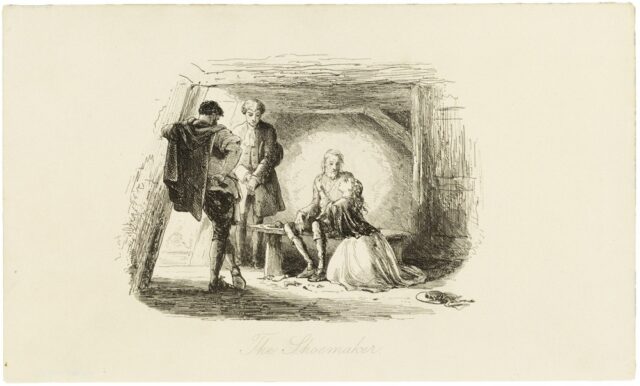From Crime Reads:
The crux of Claire Harman’s new book, Murder by the Book: The Crime that Shocked Dickens’s London, is that life imitates art. In the dead of night on May 5, 1840, someone slit the throat of Lord William Russell. Suspicions quickly narrowed on Lord William’s valet, Francois Courvoisier, who, it was argued, had been inflamed by reading the sensational crime fiction so popular at the time. In one of his several confessions, Courvoisier revealed himself as a copycat killer, reporting that “the idea [for the murder] was first suggested to him by reading and seeing the performance of Jack Sheppard.”
The novel, written by William Harrison Ainsworth, an author more well-known at the time than his friend Charles Dickens, whom he “helped to ‘groom’ for literary success,” according to the British Library, was trending at that historical moment. After running as a serial in Bentley’s Miscellany in 1839, it was widely reprinted in pirated editions and adapted into quick plays. The supposedly murder-inspiring plot pulled its hero from history, chronicling the life of a legendary pickpocket and jailbreaker named Jack Sheppard.
The origin of Sheppard’s story can be found in the ultimate 18th century true crime read, The Newgate Calendar; or, Malefactors’ Bloody Register, which collected the most notorious tales of those confined to Newgate prison and subsequently hanged at Tyburn. It is a volume full of “violent, intriguing and thoroughly addictive true-life cases,” writes Harman. With its illustrated depictions of grisly crimes, The Newgate Calendar was first published in book form in 1773, followed by several other versions, some using the ‘Newgate’ moniker, some not. Prior to that, Londoners would have read the news via ephemeral broadsides. The solid, five-volume book, however, became a useful tool for enforcing the contemporary social ideas about vice and virtue. New editions appeared well into the nineteenth century, some with illustrations by Hablot Knight Browne (aka “Phiz,” Dickens’s favorite illustrator).
. . . .
“So obtrusive in life, the theme of Newgate and the gallows could not fail to show itself in all the popular arts,” writes Keith Hollingsworth in his 1963 book, The Newgate Novel, which essentially defined the term for English majors everywhere. Only “eight or nine” novels, he believes, truly lived up to the classification. And it all began with Edward Bulwer-Lytton’s fifth and sixth novels, Paul Clifford (1830) and Eugene Aram (1832). Paul Clifford is the novel that famously opens, “It was a dark and stormy night….” The plot follows an orphaned boy who finds encouragement in the lore surrounding highwayman Dick Turpin and turns to robbery as his life’s work until he falls in love. Bulwer-Lytton was known for his heavy-handedness; even as a departure from his previous work, though, this novel still concludes with a moral about corruption, injustice, and redemption. Eugene Aram was less reform-minded, focusing on another real-life Newgate alum, a genteel scholar turned killer.
. . . .
Oliver Twist, published as a serial from 1837-39, is next on Hollingsworth’s list, although the author, Charles Dickens, would be quick to disagree. “Dickens was disgusted that Oliver Twist became caught up in the [Newgate novel] controversy,” writes Professor Philip Horne. But the novel is filled with street slang and seedy characters that command our respect if not our consent, e.g., Fagin and the Artful Dodger. Plus, the Newgate Calendar is referenced twice in the novel, “the pages … soiled and thumbed with use.” It’s also worth noting that Dickens attended the execution of Courvoisier, as did William Makepeace Thackeray. (There’s an excellent description of this in Harman’s book.)
Link to the rest at Crime Reads
Here are a couple of works by Hablot Knight Browne, per the OP, Dickens’ favorite illustrator.

.

If you go to Amazon and look at both listings for The Newgate Novel, you will find it an excellent example of the level of nurturing and sales support many university presses give their authors. /sarcasm tag
(It’s a recurrent gripe of mine.)